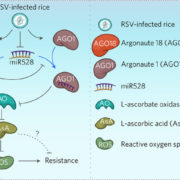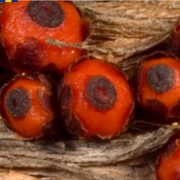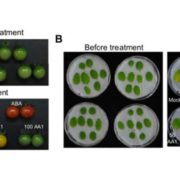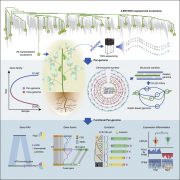Review: History of Solanaceae family in genetic research
 Plants from the Solanaceae family had, and continue to have, fundamental roles in plant genetic research. Gebhardt summarizes the historical contributions of the Solanaceous plants tomato, tobacco, petunia, potato, pepper, and eggplant. The tomato has been a model plant for studying fruit traits such as sugar content. Fruit traits, including size, shape, and capsaicinoid content, have also been studied in the pepper plant, and the pepper has been useful for identifying resistance genes for bacterial and viral infections. Tobacco was crucial for understanding regeneration of plants from undifferentiated cells and stable transformation using the Ti plasmid from Agrobacterium. Petunia was used to study the genetics of flower morphology, pigmentation, and development. The potato is uniquely suited for studying the genetics of tuber development, and the potato genome was useful for constructing genetic linkage maps to compare genome structures before the era of high-throughput sequencing. The eggplant is an under-utilized Solanaceous plant, although a draft genome sequence was published in 2014. The agronomic impact from the genetics of Solanaceous plants has come from identifying genes responsible for pathogen resistance and for desirable phenotypes, such as fruit color. The Solanaceae family has central roles in both establishing plant genetics in the first half of the twentieth century and advancing plant genomics in recent decades. (Summary by Daniel Czerny) Theor. Appl. Genet. 10.1007/s00122-016-2804-1 Photo sources: ARS, Markus Hagenlocher, Aggie Horticulture, fir0002|flagstaffotos.com.au, فارس البلغم, Joydeep
Plants from the Solanaceae family had, and continue to have, fundamental roles in plant genetic research. Gebhardt summarizes the historical contributions of the Solanaceous plants tomato, tobacco, petunia, potato, pepper, and eggplant. The tomato has been a model plant for studying fruit traits such as sugar content. Fruit traits, including size, shape, and capsaicinoid content, have also been studied in the pepper plant, and the pepper has been useful for identifying resistance genes for bacterial and viral infections. Tobacco was crucial for understanding regeneration of plants from undifferentiated cells and stable transformation using the Ti plasmid from Agrobacterium. Petunia was used to study the genetics of flower morphology, pigmentation, and development. The potato is uniquely suited for studying the genetics of tuber development, and the potato genome was useful for constructing genetic linkage maps to compare genome structures before the era of high-throughput sequencing. The eggplant is an under-utilized Solanaceous plant, although a draft genome sequence was published in 2014. The agronomic impact from the genetics of Solanaceous plants has come from identifying genes responsible for pathogen resistance and for desirable phenotypes, such as fruit color. The Solanaceae family has central roles in both establishing plant genetics in the first half of the twentieth century and advancing plant genomics in recent decades. (Summary by Daniel Czerny) Theor. Appl. Genet. 10.1007/s00122-016-2804-1 Photo sources: ARS, Markus Hagenlocher, Aggie Horticulture, fir0002|flagstaffotos.com.au, فارس البلغم, Joydeep










Leave a Reply
Want to join the discussion?Feel free to contribute!